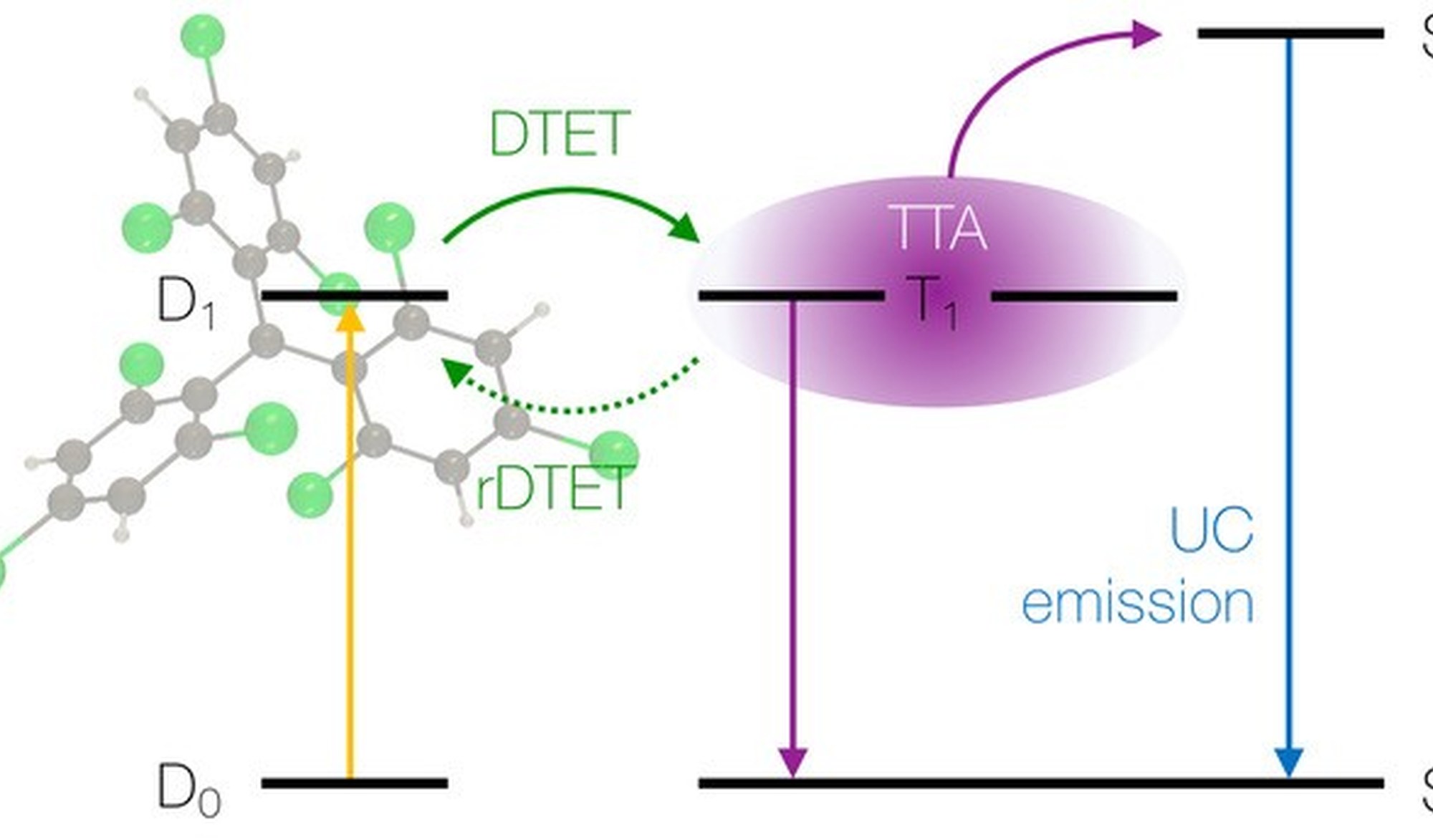Mechanism of Doublet−Triplet Energy Transfer for Photon Upconversion

Internship
Type of Project: Theory Project
Location: Donostia
Supervisors:
Claire Tonnelé
David Casanova
Photo upconversion (UC) via annihilation of excited triplets (TTA) has gained attention for applications like renewable energy, bioimaging, and phototherapy. The process involves a molecular sensitizer (triplet donor) and an emitter (triplet acceptor). Despite promising features, energy loss during intersystem crossing (ISC) limits low-energy photon upconversion efficiency.
The current project aims to address this limitation by investigating solutions to overcome the energy loss during ISC. Specifically, we seek to replace the metal-organic complex sensitizer with a pure organic π-radical dye. This involves leveraging excited doublet-triplet energy transfer (DTET) by directly exciting an organic π-radical. Essentially, this is a computational research endeavor dedicated to unraveling the mechanisms of DTET in organic materials. To achieve this, we will employ quantum chemistry methods to characterize electronic excited states, examine their photophysical properties, calculate interstate couplings, and utilize various approximate expressions to determine rate constants.
The candidate should have a basic knowledge on quantum mechanics (assumed in chemistry and physics BSc. students), and preferably have experience in the computation of the electronic structure of molecular or extended systems.
